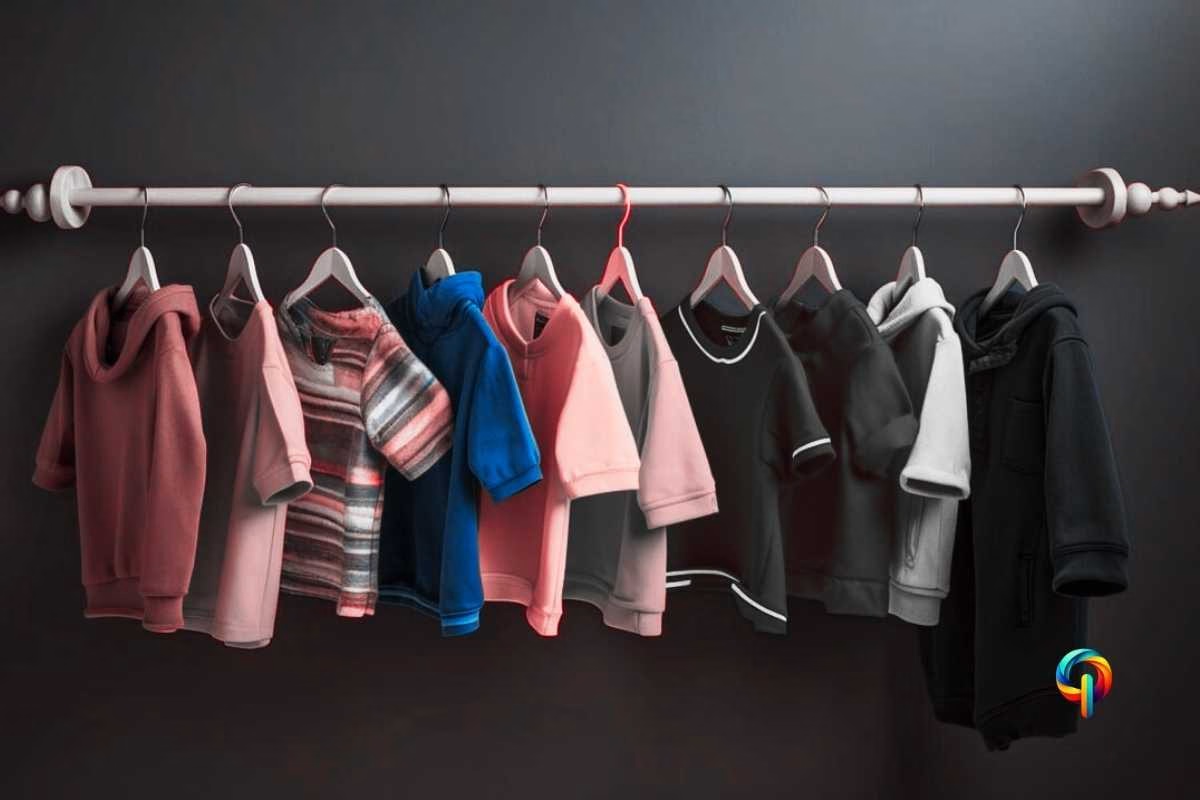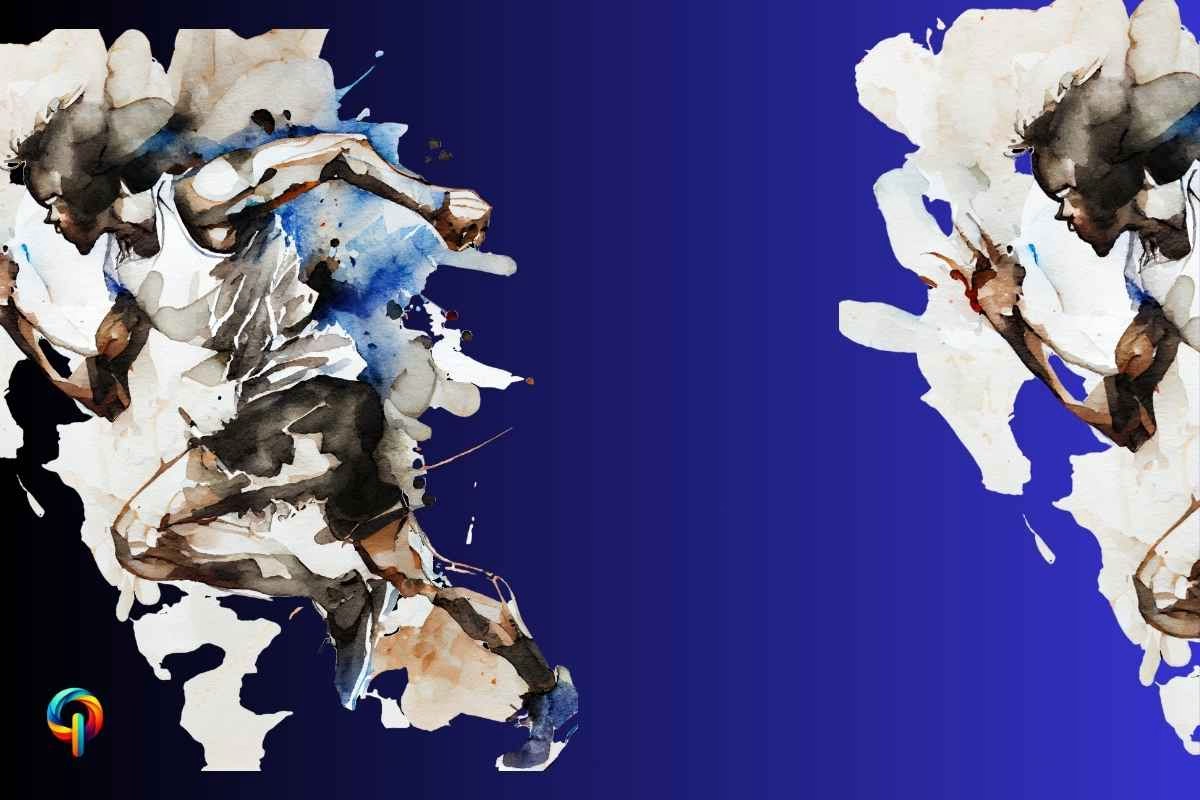
This article explores the psychology of fashion, examining how clothing choices impact our emotions, self-perception, and social interactions.
It explains how colors and styles influence mood and behavior, offering practical advice on using fashion to boost confidence and build a personal brand. The article also discusses the future of fashion psychology, emphasizing the growing importance of sustainability and ethical practices within the industry.
Finally, it addresses common questions regarding color psychology, the impact of fashion on mental health, and the interplay between culture and personal style.
Contents Of The Article
How Does Fashion Psychology Influence Our Emotions and Behavior?
Fashion isn’t just about looking good.
It’s a language, a mood, and a way to tell the world who you are without saying a word. But did you know it’s also a window into your mind?
That’s where the psychology of fashion comes in. It’s all about how the colors you wear, the styles you choose, and even the way you put an outfit together can shape your emotions, boost your confidence, and influence how others see you.
Think about it: why do you feel unstoppable in that power suit or relaxed in your favorite hoodie?
It’s not just about comfort—it’s psychology. Colors like red can make you feel bold and confident, while soft pastels might calm your nerves. And it’s not just about you; your outfit can also shape first impressions, whether you’re acing a job interview or making a killer entrance at a party.
In this article, we’re diving into the psychology of fashion—how it works, why it matters, and how you can use it to your advantage. From understanding the emotional impact of colors to decoding the messages your style sends, we’ll explore how fashion can boost your well-being, improve your social interactions, and even change the way you see yourself.
So, whether you’re a fashion enthusiast or just someone who loves a good outfit, get ready to see your wardrobe in a whole new light. Because fashion isn’t just about what you wear—it’s about how it makes you feel and the story it tells.
Let’s unlock the secrets of the psychology of fashion together!
What is the Psychology of Fashion?
Let’s break it down: the psychology of fashion is all about understanding how what we wear affects our minds and the people around us. It’s not just about looking good—it’s about feeling good and making an impact.
This fascinating field explores how clothing choices, colors, and styles influence our emotions, behavior, and even the way others perceive us.
Think of it as the bridge between your wardrobe and your brain. For example, wearing bright colors like yellow or red can boost your mood and energy levels, while neutral tones like beige or gray might help you feel calm and focused. And it’s not just about colors—styles matter too. A sharp suit can make you feel powerful and confident, while cozy loungewear might help you relax and unwind.
But it goes deeper than that. The psychology of fashion also looks at how clothing shapes our identity. What you wear can reflect your personality, your values, and even your goals. It’s a form of self-expression that speaks volumes without you saying a word.
In short, the psychology of fashion is about understanding the connection between what we wear and how we think, feel, and interact with the world.
It’s a powerful tool that can help you make intentional fashion choices to boost your confidence, improve your mood, and create the impression you want.
Importance of Fashion Psychology
Why should you care about the psychology of fashion? Because it’s not just about looking good—it’s about feeling good and making a lasting impression.
Fashion psychology is the study of how clothing impacts our mental and emotional states, and its importance can’t be overstated.
Here’s the deal: what you wear has a direct impact on your confidence and mood. Ever noticed how putting on your favorite outfit can instantly lift your spirits? That’s the emotional impact of fashion at work. Colors, textures, and styles can trigger specific emotions and even change the way you think.
For example, wearing bold colors like red or blue can make you feel more assertive, while soft fabrics like cotton or silk can help you feel calm and relaxed.
But it’s not just about you—fashion also influences how others see you. The right outfit can help you make a great first impression, whether you’re acing a job interview or meeting new friends. This is where social perception comes into play. Your clothing choices send subtle signals about your personality, confidence, and even your intentions.
In short, understanding the psychology of fashion can help you make intentional choices that boost your confidence, improve your mood, and enhance your social interactions.
It’s not just about following trends—it’s about using fashion as a tool to express yourself and connect with the world.
Key Concepts in Fashion Psychology
Let’s dive into the key concepts that make the psychology of fashion so fascinating. These ideas help us understand how clothing influences our behavior, emotions, and interactions with others.
- Color Psychology:
Colors aren’t just pretty—they’re powerful. Different colors can evoke different emotions and reactions. For example, red is often associated with energy and passion, while blue is linked to calmness and trust. Understanding color psychology can help you choose outfits that match your mood or the impression you want to create. - Style Symbolism:
The styles you choose also send messages. A tailored suit might signal professionalism and authority, while a bohemian dress could suggest creativity and freedom. Style symbolism is all about the meaning behind what you wear and how it reflects your personality or goals. - Self-Perception and Social Dynamics:
What you wear doesn’t just affect how others see you—it also affects how you see yourself. This is called self-perception. For example, wearing formal attire can make you feel more confident and capable, while casual clothes might help you feel relaxed and approachable. On the flip side, your clothing choices also influence social dynamics, shaping how others interact with you.
Together, these concepts show how fashion is more than just fabric and thread—it’s a powerful tool that shapes our behavior, emotions, and relationships. By understanding these core concepts in fashion psychology, you can make smarter, more intentional choices about what you wear and how it impacts your life.
Benefits of Understanding Fashion Psychology
Let’s talk about why the psychology of fashion is a game-changer. It’s not just about looking good—it’s about feeling good, making connections, and building a personal brand that truly represents you.
By understanding how fashion impacts your emotions, behavior, and social interactions, you can unlock a whole new level of confidence and self-expression.
From boosting your emotional well-being to helping you stand out in a crowd, the advantages of fashion psychology are endless. Whether you’re dressing for a job interview, a first date, or just a regular day, knowing how to use fashion to your advantage can make all the difference.
Let’s dive into the key benefits and see how you can start using fashion as a tool to enhance your life.
Enhancing Emotional Well-Being Through Fashion
Did you know that what you wear can actually change how you feel? It’s true! The psychology of fashion shows that clothing has a direct impact on your emotional well-being. By choosing outfits that align with your mood or emotional needs, you can boost your confidence, reduce stress, and even improve your overall mental health.
Here’s how it works: colors, fabrics, and styles can trigger specific emotions. For example, wearing bright colors like yellow or orange can lift your spirits and energize you, while soft, cozy fabrics like cotton or cashmere can help you feel calm and relaxed. This is why therapeutic fashion is becoming a thing—people are using clothing as a way to manage their emotions and improve their mental health.
But it’s not just about comfort—it’s also about emotional expression. Wearing clothes that reflect how you feel (or how you want to feel) can be incredibly empowering. Feeling down? Throw on your favorite outfit to boost your mood. Need to focus? Dress in neutral tones to help you stay calm and centered.
In short, fashion isn’t just about looking good—it’s about feeling good. By understanding the psychology of fashion, you can use clothing as a tool to enhance your emotional well-being and take control of your mood.
Building a Personal Brand with Fashion
Your wardrobe is more than just a collection of clothes—it’s a reflection of who you are. And when used strategically, it can be a powerful tool for personal branding. The psychology of fashion teaches us that the way we dress sends subtle messages about our personality, values, and professionalism.
Think about it: when you see someone in a sharp suit, you might assume they’re confident and capable. Or when someone wears bold, colorful outfits, you might think they’re creative and outgoing. These are examples of fashion communication—using clothing to convey a specific message.
So, how can you use fashion to build your personal brand? Start by defining your style identity. What do you want people to think when they see you? Do you want to come across as professional, creative, approachable, or bold? Once you know your brand, curate a wardrobe that reflects it.
For example, if you’re building a professional brand, invest in tailored pieces and neutral tones. If you’re going for a creative vibe, experiment with bold colors and unique patterns. The key is consistency—your style should align with your goals and values, so people get a clear sense of who you are.
In short, fashion is a powerful tool for personal branding. By understanding the psychology of fashion, you can use clothing to communicate your identity, build trust, and stand out in a crowded world.
How to Apply Fashion Psychology in Daily Life
Ready to take your wardrobe to the next level? The psychology of fashion isn’t just a theory—it’s a practical tool you can use every day to boost your mood, confidence, and social interactions. By making intentional clothing choices, you can align your outfits with your emotions, goals, and identity.
Whether you’re dressing for a big presentation, a casual day out, or just want to feel your best, understanding the psychology of fashion can help you make smarter, more meaningful decisions about what you wear. Let’s explore some practical tips to help you apply these principles in your daily life.
Dressing for Emotional Alignment
Ever had one of those days where you just don’t feel like yourself? The psychology of fashion can help with that. By choosing clothing that reflects your emotional state—or the mood you want to be in—you can take control of how you feel and present yourself to the world.
Here’s how it works:
- Feeling down? Wear bright, cheerful colors like yellow or orange to boost your energy and mood.
- Stressed out? Opt for soft, cozy fabrics like cotton or cashmere to help you feel calm and comforted.
- Need a confidence boost? Put on something tailored or structured, like a blazer or a fitted dress, to feel powerful and in control.
This is what mood-based dressing is all about. It’s not just about looking good—it’s about using clothing as a form of self-care and emotional expression. By dressing in a way that aligns with your emotions, you can improve your mental well-being and feel more like yourself.
Building a Wardrobe That Reflects Your Identity
Your wardrobe is more than just a collection of clothes—it’s a reflection of who you are. The psychology of fashion teaches us that what we wear can communicate our personality, values, and lifestyle. That’s why it’s so important to build a wardrobe that truly reflects your authentic self.
Here’s how to do it:
- Define Your Style Identity: Think about how you want to present yourself to the world. Are you bold and creative? Professional and polished? Relaxed and approachable? Your wardrobe should align with your personality and goals.
- Curate with Intention: Instead of buying trendy pieces that don’t resonate with you, focus on timeless, versatile items that reflect your personal style. Think about colors, patterns, and fabrics that make you feel confident and comfortable.
- Stay Consistent: Consistency is key to building a strong visual identity. Whether you’re dressing for work, a night out, or a casual day, your outfits should reflect the same core values and personality traits.
By curating a wardrobe that aligns with your identity, you’ll not only look great but also feel more confident and authentic. It’s all about using fashion as a tool for self-expression and personal branding.
The Future of Fashion Psychology
Fashion isn’t just about what’s trending—it’s about how it makes us feel, think, and act. And as the world of fashion continues to evolve, so does the psychology of fashion. This fascinating field is becoming more important than ever, helping us understand how clothing influences our behavior, emotions, and overall well-being.
From global trends to ethical practices, the future of fashion psychology is all about creating a deeper connection between what we wear and who we are. It’s not just about looking good—it’s about feeling good, making mindful choices, and using fashion as a tool for positive change. Let’s dive into what the future holds for this exciting field.
Global Trends in Fashion Psychology
Fashion is a universal language, but it speaks differently in every culture. That’s where the psychology of fashion comes in—it helps us understand how cultural influences shape the way we dress and express ourselves. From traditional garments to modern trends, fashion psychology is exploring how clothing impacts behavior and identity across the globe.
For example, in some cultures, bright colors and bold patterns are a symbol of celebration and joy, while in others, neutral tones and minimalist styles represent sophistication and elegance. These cross-cultural fashion trends show how clothing can reflect and influence societal values, traditions, and even individual personalities.
But it’s not just about tradition—global fashion movements are also shaping the future of fashion psychology. Think about the rise of streetwear, sustainable fashion, or gender-neutral clothing. These trends aren’t just about style—they’re about breaking boundaries, challenging norms, and creating a more inclusive world.
In short, the psychology of fashion is helping us understand how clothing connects us to our culture, our community, and ourselves. It’s a powerful tool for exploring identity, expression, and the role of fashion in our lives.
The Path to a More Mindful Fashion Industry
The fashion industry is changing, and the psychology of fashion is leading the way. As consumers become more aware of the impact of their choices, fashion psychology is helping to create a more mindful and ethical industry.
Here’s how:
- Encouraging Intentional Choices: Fashion psychology teaches us to think about why we buy what we buy. Are we shopping for quality, sustainability, or just following trends? By making mindful consumption a priority, we can reduce waste and support brands that align with our values.
- Promoting Sustainable Trends: From eco-friendly fabrics to second-hand shopping, sustainable fashion is on the rise. Fashion psychology is helping us understand the emotional and psychological benefits of choosing sustainable options, like feeling good about our impact on the planet.
- Building Consumer Awareness: The more we understand the psychological impact of fashion, the more we can make informed decisions. This includes supporting brands that prioritize fair labor practices, ethical sourcing, and transparency.
In short, the psychology of fashion is paving the way for a more conscious and compassionate industry. It’s not just about looking good—it’s about doing good, for ourselves and for the world.
Frequently Asked Questions of Psychology of Fashion
1. What is the psychology of fashion?
The psychology of fashion is the study of how clothing choices, colors, and styles influence our emotions, behavior, and social interactions. It’s about understanding the connection between what we wear and how we think, feel, and connect with others. From boosting confidence to shaping first impressions, fashion psychology shows that clothing is more than just fabric—it’s a powerful tool for self-expression and communication.
2. How do colors affect behavior in fashion?
Colors are more than just pretty—they’re powerful! The psychology of color shows that different hues can evoke specific emotions and influence our mood and behavior. For example, red can make you feel bold and confident, while blue can create a sense of calm and trust. By choosing colors that align with your mood or goals, you can use fashion to enhance your emotional well-being and make a lasting impression.
3. Can clothing styles boost confidence?
Absolutely! The right outfit can work wonders for your confidence. Wearing well-fitted, stylish clothing that reflects your personality can make you feel more self-assured and capable. This is why people often talk about the “power suit” effect—dressing in a way that makes you feel powerful can actually boost your confidence and performance.
What are the benefits of understanding fashion psychology?
Fashion psychology provides insights that can improve emotional well-being, boost self-confidence, and enhance social interactions. It allows individuals to make more mindful wardrobe choices that align with their personal style and professional goals. Brands and designers also use fashion psychology to create products that resonate with consumers, strengthening brand loyalty and improving customer experiences.
What are the challenges in fashion psychology?
Despite its many benefits, fashion psychology faces challenges such as societal pressures, unrealistic beauty standards, and the influence of fast fashion. Many people feel compelled to follow trends even if they don’t align with their personal style, leading to dissatisfaction or low self-esteem. Additionally, the psychological impact of body image concerns and materialism can create emotional stress. Overcoming these challenges requires a shift toward mindful and intentional fashion choices.
How can I apply fashion psychology in daily life?
Applying fashion psychology involves dressing in a way that aligns with your emotions, lifestyle, and personal identity. Choose outfits that make you feel confident, comfortable, and authentic. Experiment with colors that boost your mood, invest in quality pieces that reflect your personality, and avoid impulsive fashion decisions. Understanding fashion psychology can help you build a wardrobe that not only looks good but also positively influences your mindset.
What is the future of fashion psychology?
The future of fashion psychology is shifting toward sustainability, inclusivity, and ethical practices. As awareness grows about the environmental and psychological impact of fast fashion, consumers are leaning toward mindful shopping and sustainable clothing options. The industry is also prioritizing diversity, ensuring that fashion is accessible and representative of different body types, cultures, and personal styles. Technology, such as AI-driven personal styling, is expected to further enhance fashion choices based on psychological insights.
How does fashion impact mental health?
Fashion can significantly affect mental health by influencing self-esteem, body image, and emotional well-being. Wearing clothes that fit well and reflect personal style can create a positive self-image, while uncomfortable or ill-fitting attire can lead to discomfort and insecurity. Additionally, societal expectations and media portrayals of beauty can contribute to anxiety or self-doubt. Mindful fashion choices can help individuals maintain a healthy relationship with their appearance and overall mental well-being.
Why do people dress differently based on their mood?
People often subconsciously select outfits that reflect or influence their mood. When feeling confident or happy, they may opt for bold colors and trendy styles, while a more subdued or neutral outfit might be chosen during low-energy days. This phenomenon is called “mood dressing,” and it showcases how fashion serves as an emotional expression. Recognizing these patterns can help individuals make wardrobe decisions that positively impact their emotions.
How does culture influence fashion psychology?
Culture plays a significant role in fashion psychology, shaping the way people dress based on traditions, values, and social norms. Fashion choices vary widely across cultures, reflecting different perceptions of beauty, modesty, and status. Understanding cultural influences helps explain why certain styles are embraced in specific regions and how global fashion trends evolve. Cultural identity is often expressed through clothing, making fashion an important aspect of personal and collective heritage.
Does personal style reflect personality?
Yes, personal style is often a reflection of personality, preferences, and lifestyle. Some people prefer minimalist, neutral-toned outfits, signaling simplicity and sophistication, while others gravitate toward bold colors and patterns, showcasing creativity and confidence. By understanding their personal style, individuals can create a wardrobe that authentically represents who they are, rather than just following trends.
How do celebrities influence fashion behavior?
Celebrities and influencers have a major impact on fashion behavior, as they often set trends and influence public perception of style. Their clothing choices can lead to widespread popularity of certain brands, colors, or designs. People tend to emulate celebrity fashion due to admiration or the desire to associate with their perceived status. Social media platforms like Instagram and TikTok further amplify celebrity-driven fashion trends, making them more accessible to the public.
How does fashion influence professional success?
Dressing appropriately for work environments can significantly impact professional success. Studies show that wearing polished and professional attire can enhance credibility, improve first impressions, and boost confidence in workplace settings. Whether in corporate settings, creative industries, or entrepreneurship, fashion plays a key role in shaping how professionals are perceived and how they present themselves in their respective fields.
Conclusion: The Power of Fashion Psychology in Everyday Life
The psychology of fashion goes beyond trends—it’s a powerful force that shapes our emotions, behaviors, and the way we interact with the world. Every color, fabric, and style choice carries meaning, influencing our confidence, mood, and even how others perceive us. Wearing bold colors can project energy and strength, while soft tones create a calming effect. Understanding the connection between fashion and human psychology helps individuals make more intentional choices, allowing them to express their personality while enhancing their emotional well-being.
Fashion is more than just clothing; it’s a form of nonverbal communication that reflects identity, values, and aspirations. By embracing the psychology behind fashion, we can create a wardrobe that not only looks good but also makes us feel empowered and aligned with our true selves. As the fashion industry evolves, incorporating sustainable, inclusive, and mindful fashion practices will ensure a healthier relationship with clothing, where style meets self-awareness. Ultimately, mastering the psychology of fashion allows us to harness the power of colors and styles to positively impact our lives and those around us.





